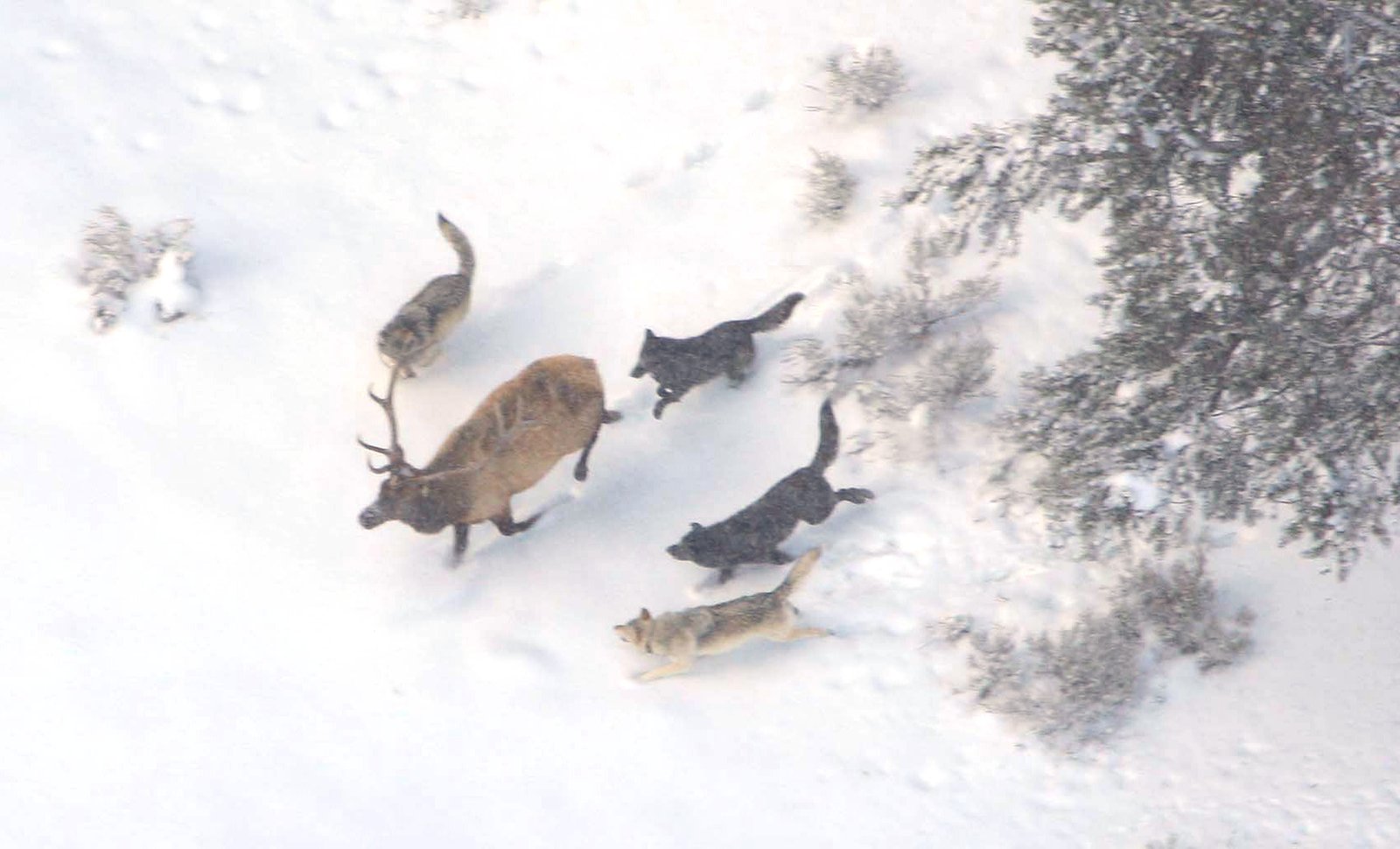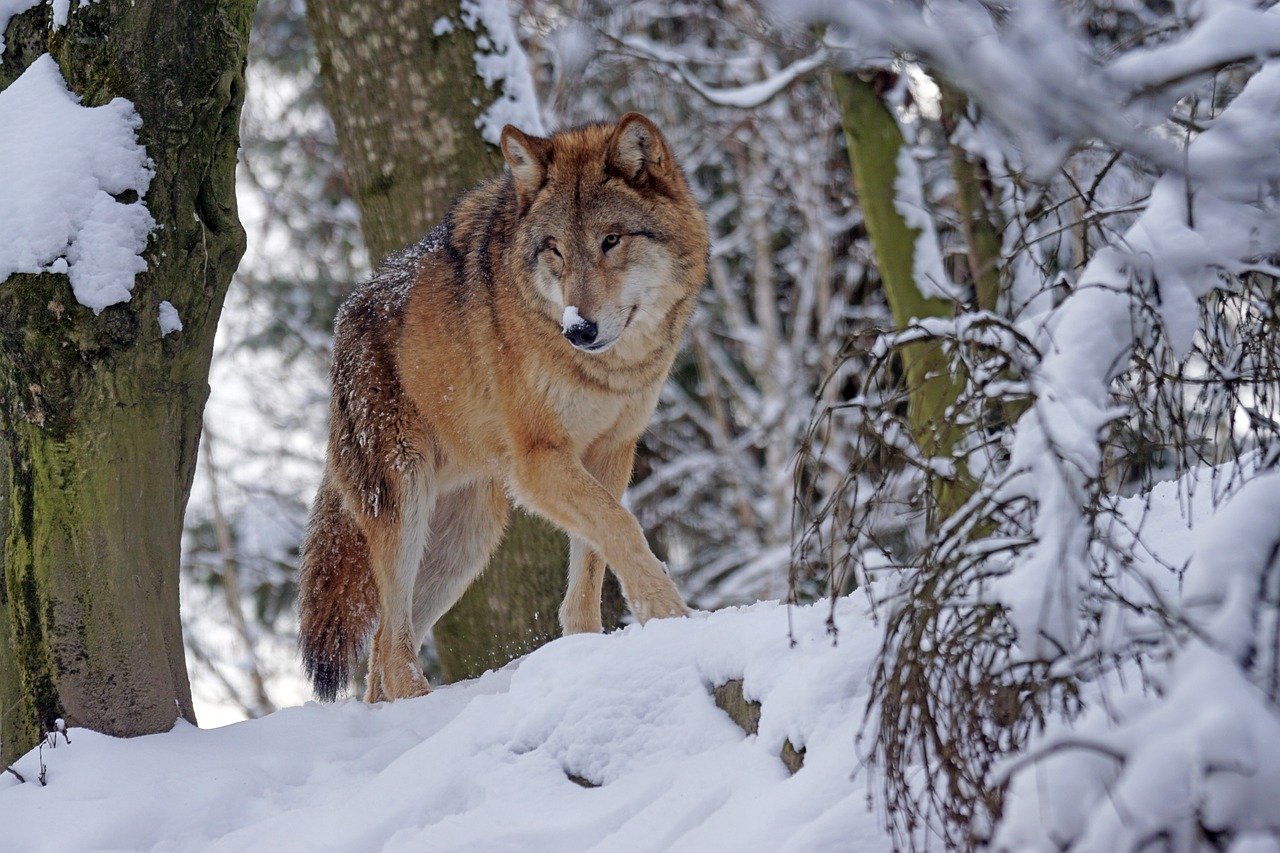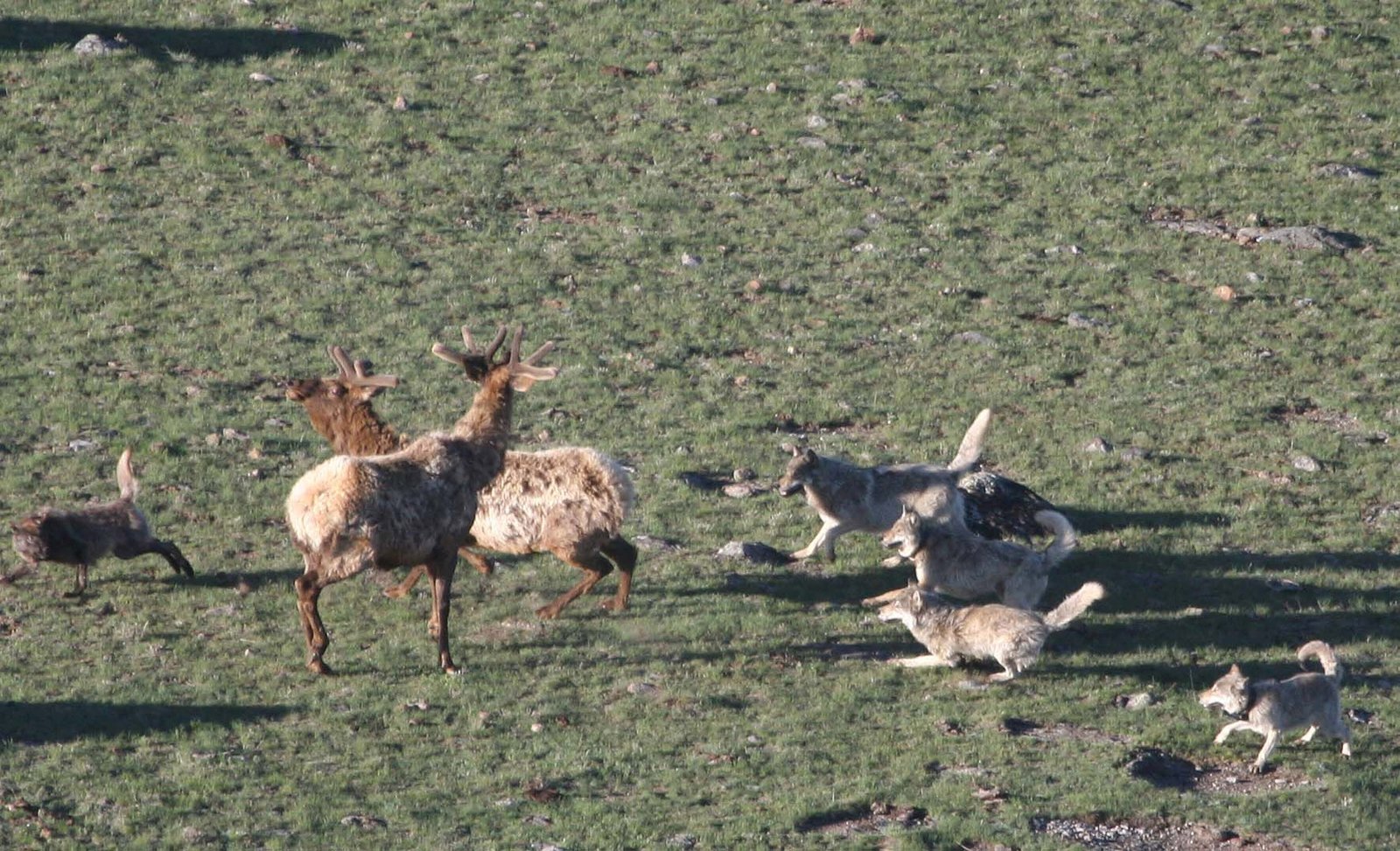The reintroduction of wolves to Yellowstone has turned into one of the most eye-opening conservation stories in recent history. Far from just restoring a missing predator, these wolves reshaped the entire ecosystem. Scientists observed a “trophic cascade”—where elk populations balanced out, vegetation like willows and aspens rebounded, and even river paths began to stabilize. It’s taught conservationists how apex predators play a critical role in maintaining biodiversity and ecological health. The Yellowstone project also highlighted the importance of letting nature self-regulate when given the chance. With wolves back in the picture, the park has become a richer, more balanced landscape. It’s a wild success story that’s still teaching us lessons today.
The Ripple Effect of Predator Reintroduction

When wolves were returned to Yellowstone in 1995, nobody expected how deeply their presence would ripple through the ecosystem. Wolves, as apex predators, quickly began hunting elk, which had previously roamed unchecked and grazed too heavily on young trees and shrubs. This natural correction was like pressing a reset button on the park’s health. Suddenly, willow and aspen groves began to recover, and the landscape started to transform before everyone’s eyes.
This ripple effect, known as a “trophic cascade,” became one of Yellowstone’s most important lessons. It showed that reintroducing a single species can set off a chain reaction affecting dozens of others. Rivers changed course, songbirds returned, and even the beaver population rebounded. The unexpected depth of these changes gave conservationists a new appreciation for the hidden connections within wild spaces.
The Importance of Top Predators

Yellowstone taught the world that top predators are more than just symbols of wilderness—they’re the architects of balance. Without wolves, elk populations had exploded, stripping the land of vegetation and leaving other species hungry and homeless. The wolves’ return restored order, reminding us that every ecosystem needs its keystone species in place.
Conservationists learned to value predators not just for their own sake, but for the role they play in shaping habitats. It became clear that when we remove top predators, entire systems can unravel. Wolves showed us that a healthy wilderness is a complete wilderness, with every rung of the food chain intact and thriving.
Restoring Biodiversity and Richness
One of the most heartwarming outcomes in Yellowstone was the return of variety—plants, animals, and even insects bounced back. As wolves kept elk numbers in check, willows and aspens flourished, providing homes and food for a host of other species. Beavers, once nearly gone, returned and started building dams again, creating wetlands that sheltered frogs, fish, and waterfowl.
This explosion of life offered proof that biodiversity is resilient if we give it a chance. Conservationists now recognize that saving one species can unlock doors for many others. The story of Yellowstone’s wolves is a living example of how interconnected life is, and how one change can revive an entire web of existence.
The Balance Between Predator and Prey
Yellowstone’s wolves have become living teachers about the delicate balance required between predator and prey. Before wolves, elk populations ballooned, and overgrazing became a serious problem. When wolves arrived, elk became more cautious, moving more often and grazing less heavily in one place. This simple shift allowed plants time to recover and grow.
Watching this dance between hunter and hunted, conservationists realized that balance is more than just numbers—it’s about behaviors, timing, and the natural ebb and flow of life. Wolves didn’t just reduce elk numbers; they changed elk behavior, which in turn changed the park itself. It’s a reminder that nature thrives not through control, but through harmony.
The Power of Natural Regulation

Before wolves, humans tried to manage Yellowstone’s elk population through hunting and culling, with mixed results. But the wolves accomplished what decades of human management could not. By simply living and hunting as they always have, wolves restored a sense of order to the wild.
This natural regulation is something conservationists now strive for elsewhere. Instead of heavy-handed interventions, the success in Yellowstone has encouraged a hands-off, let-nature-lead approach in many other places. It’s a lesson in humility—sometimes, nature knows best, and our greatest contribution is simply to restore what’s missing and step back.
The Unexpected Return of Beavers

Few people guessed that wolves would become the beavers’ best friends, but that’s exactly what happened. As elk stopped eating so many young willow shoots, willows grew tall and thick. Beavers, who depend on willows for food and building materials, began to return and thrive. Their dams created ponds and wetlands, which brought frogs, ducks, and fish back into the landscape.
This surprising twist showed conservationists that helping one species can sometimes rescue another, even across different animal families. It’s a magical kind of domino effect—one that inspires hope for restoring damaged ecosystems elsewhere. The Yellowstone wolves taught us that nature’s solutions are often more creative than we could ever plan.
Changing River Courses and Landscape
Perhaps the most jaw-dropping change in Yellowstone after the wolf reintroduction was how the land itself shifted. Rivers that once eroded their banks and wandered aimlessly began to settle into healthier, more stable courses. This happened because new vegetation, shielded from constant elk grazing, held the soil in place.
These physical changes to the landscape were a revelation. Conservationists saw that animal behavior could literally sculpt the earth, influencing water flow, soil stability, and flood patterns. It’s a powerful reminder that wildlife and wilderness are not separate—they shape each other in ways we’re still learning to understand.
Human Perspectives and Controversy
The return of the wolves did not come without heated debate. Ranchers worried about livestock losses, and some locals feared for their livelihoods. Yet over time, many people began to see the positive changes in the park and the boost to tourism from visitors hoping to catch a glimpse of a wild wolf pack.
The Yellowstone experiment taught conservationists that successful reintroduction projects must include open conversations with local communities. Wolves brought together scientists, ranchers, tourists, and nature lovers in a passionate, sometimes messy dialogue. The lesson? Conservation isn’t just about animals—it’s also about people, compromise, and finding common ground.
Lessons for Global Rewilding Efforts
The ripples from Yellowstone spread far beyond its borders. Conservation projects around the world have looked to Yellowstone as a shining example of how rewilding can work. From Europe to Africa, conservationists are using similar strategies—restoring top predators and letting nature heal itself.
Yellowstone’s wolves became global ambassadors, sparking reintroduction projects for lynxes, wildcats, and even bison. The park’s example proved that rewilding is not a fantasy, but a real, practical tool for reviving landscapes and bringing back lost species. The wolves’ story now inspires countless other efforts to let nature lead the way.
The Emotional Impact and Sense of Wonder

For many, the return of Yellowstone’s wolves has been nothing short of magical. Hearing a wolf howl at dawn, spotting a pack trotting through the snow, or watching elk move warily through the trees—these moments fill visitors with awe and gratitude. Wolves brought back a sense of wildness that had been missing from the park for generations.
Conservationists often speak about the joy and wonder that comes from seeing nature restored. The emotional impact is real, reminding us why we fight to protect wild places and the creatures that call them home. Yellowstone’s wolves have given people hope—and a renewed belief that nature can bounce back, if only we give it the chance.
In the end, Yellowstone’s wolves proved that sometimes, nature just needs a little help finding its balance again. Their return didn’t just change the park—it reshaped how we think about conservation altogether. From wildlife management to ecosystem health, the wolves have shown us the power of restoring what was lost. It’s a reminder that when we work with nature, amazing things can happen.

Born and bred in South Africa, a Capetonian at heart. Amy-Leigh’s love for nature and animals was inherited from her Dad. He loves taking the family on road trips to experience nature at its finest; Amy-Leigh’s favourite being whale watching in Hermanus and spotting Kudu along the West Coast. Amy-Leigh holds a BA in English Literature and Communication Studies.





